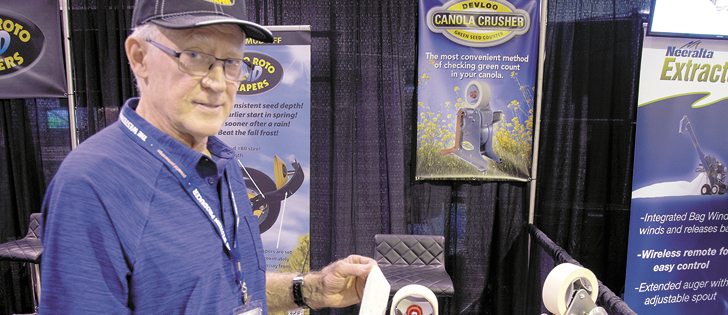Glyphosate in soybeans
BASF has registered Optill, a tank mix of glyphosate, kixor and imazethapyr for soybeans.
It adds four to six weeks of residual suppression or control of lamb’s quarters, lady’s thumb, dandelion, sow thistle, pigweed, shepherd’s purse, stinkweed, buckwheat, wild mustard, fleabane, chickweed, ragweed, barnyard grass, yellow and green foxtail and crabgrass.
Optill allows soybeans to become established and canopy ahead of additional weed pressure, including glyphosate tolerant weeds.
However the combination of Group 14 and Group 2 products might not be completely effective when it comes to Group 2 resistant biotypes.
Read Also

Gap in emission regulations hamstrings Canadian hybrid truck manufacturer
A B.C. company building hybrid engines for heavy trucks says they have the opportunity to build something leading edge in Canada, but our own laws are stopping them from doing it.
For more information, visit agro.basf.ca.
Vibrant pulses
Syngenta has paired its Vibrance product with its Apron Maxx RTA seed treatment and called it Vibrance Maxx, which can be applied to lentils, chickpeas and peas.
The new product is aimed at reduced and no-till producers, those with tight rotations or growers that have concerns about seedling establishment.
The three fungicidal products, fludioxonil, metalaxyl-M and sedaxane, control seed decay, seedling blight, post-emergent damping off and damping off caused by rhizoctonia soliani.
The product can be producer applied.
Those with pea leaf weevil or wireworm pressure can add Cruiser to the system if applied in a closed treater.
For more information, visit syngentafarm.ca.










